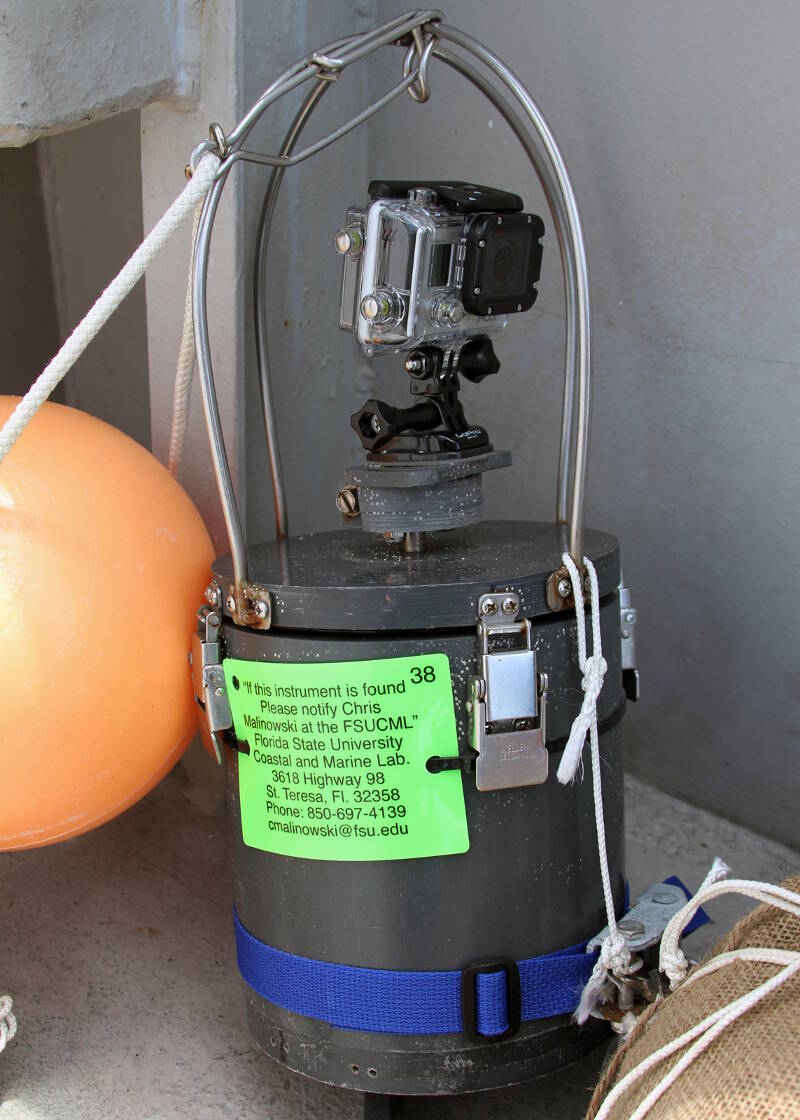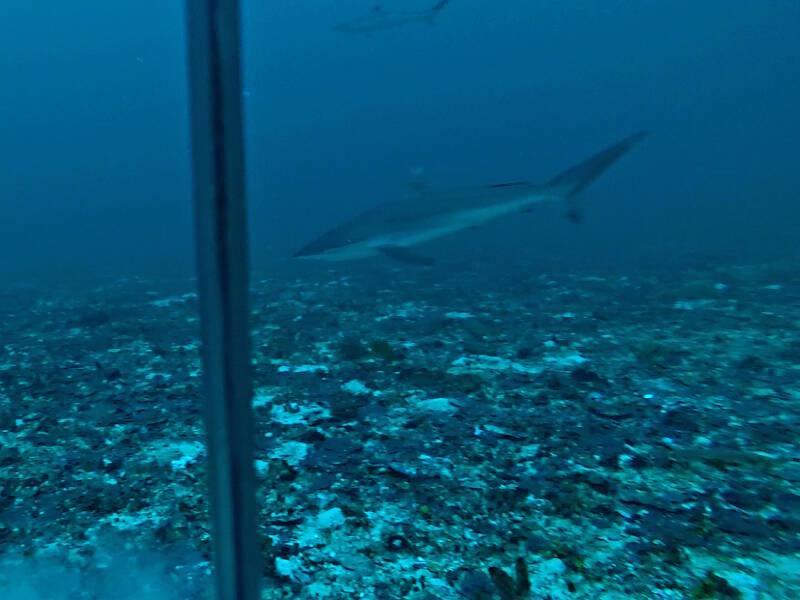
By Christopher Koenig, Coastal and Marine Laboratory - Florida State University
August 19, 2014
The Revolution fish-surveying device passively captures video of fish during a deployment on Pulley Ridge. A curious Red Grouper stayed nearby long enough to show up on several passes of the lens. Video courtesy of Christopher Koenig, Coastal and Marine Laboratory, Florida State University. Download (mp4, 5.3 MB)
Any survey method has its limitations. This is especially the case when assessing the abundance and diversity of fish populations. It is just plain difficult. Many factors influence the accuracy of surveys, including diver skill, water clarity, rugosity of the habitat, and most importantly, the behavior of the fishes. Some species are cryptic, others are ‘in your face’, and still others recognize divers as predators and flee whenever they are present. In areas frequented by spearfishers, for instance, target species seem to recognize divers by their scuba-generated bubbles, and make a hasty retreat. Often, fleeing species are the very species scientists want to quantify because they are valuable food fishes in need of assessment. Finally, water depth severely limits diver access to fish habitats. Even though technical divers can reach depths of 50 m to 120 m, their bottom time is limited at those depths and the potential for accidents increases. While the rebreather certainly solves the bubbles problem, it does not solve the depth issue.

‘The Revolution’ developed by Dr. Christopher Koenig. Five ‘Revolutions’ on board the R/V Walton Smith can be deployed as an array of fish surveyors. Image courtesy of Brian Cousin, FAU Harbor Branch. Download larger version (jpg, 657 KB).
‘The Revolution’ consists of a housing enclosing a battery-driven gear motor that rotates a mounted Go-Pro video camera about a fixed point at 1.5 revolutions per minute. By suspending the device in the water column, it in effect replaces the fixed-point surveys typically performed by divers to analyze fish communities.
The single most often used fixed-point survey is the Bohnsack-Bannerot Survey (BB Survey) developed by Jim Bohnsack and Scott Bannerot of the National Marine Fisheries Service’s Southeast Fisheries Science Center—a method that has served divers well for decades. This has been the primary survey used over the years to develop a very large database on fishes of the Florida Keys Reef Tract. The BB survey involves a single diver rotating slowly in place while recording all the fish the diver sees within a 5-meter radius imaginary cylinder. The beauty of ‘The Revolution’ is that it perfectly simulates the BB survey while increasing survey accuracy by eliminating potential diver effects and increasing the depths beyond those at which divers can safely operate.

A pair of Silky sharks glide by a ‘Revolution’ survey device in this picture taken from video. Silkys have been seen off the stern of the ship almost every day during remotely operated vehicle operations. Image courtesy of Christopher Koenig, Coastal and Marine Laboratory, Florida State University. Download larger version (jpg, 655 KB).
We are using ‘The Revolution’ to augment fish population surveys at selected sites in Pulley Ridge aboard the University of Miami’s Research Vessel F.G. Walton-Smith, comparing fish counts and biodiversity determined from remotely operated vehicle (operated by the University of North Carolina at Wilmington’s Undersea Vehicle Program) transects with fixed-point surveys determined with the Revolution. The difference between the ROV and the Revolution is that the ROV is a large machine with lights and lasers that can be disruptive to fish in the communities of interest but it can cover large expanses of the seafloor in a relatively short time whereas, the Revolution, while unobtrusive, has very limited areal range. We view the combination of data types as extremely important to the successful characterization of Pulley Ridge fish communities.